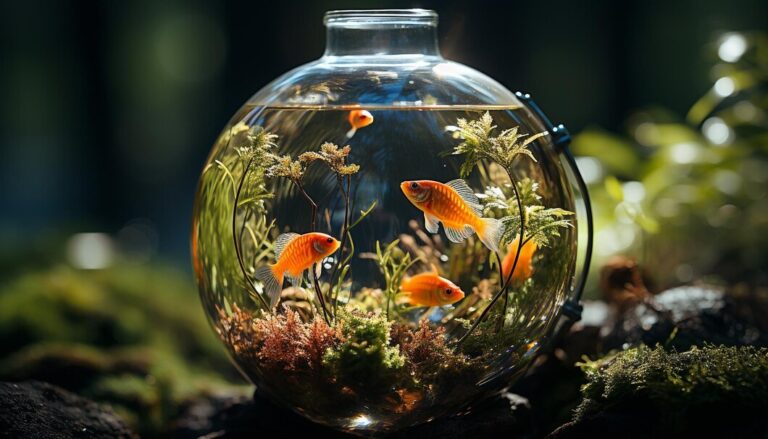Introduction
The Chili Rasbora (Boraras brigittae) is a stunningly beautiful and tiny freshwater fish that has become a favorite among aquarium enthusiasts, particularly those who maintain nano tanks. With its vibrant red coloration and peaceful nature, the Chili Rasbora is a delightful addition to any aquarium. This article will provide a comprehensive guide on caring for Chili Rasboras, including their habitat requirements, diet, behavior, and breeding.
Understanding the Chili Rasbora
Origin and Natural Habitat
Chili Rasbora are native to the blackwater streams and peat swamps of Borneo, Indonesia. These environments are characterized by soft, acidic water, dense vegetation, and a wealth of tannins, which give the water a tea-like color. Understanding their natural habitat is crucial for recreating similar conditions in your aquarium.
Physical Characteristics
Chili Rasboras are tiny, growing to a maximum length of about 0.8 inches (2 cm). Their most striking feature is their vibrant red coloration, often accented by darker horizontal stripes along their bodies. Males tend to be more brightly colored than females, especially during breeding periods.
Setting Up the Ideal Aquarium
Tank Size and Environment
Despite their small size, Chili Rasboras thrive best in groups, so a tank of at least 10 gallons is recommended to provide adequate space and maintain water quality. A densely planted tank with plenty of hiding spots mimics their natural habitat and helps reduce stress.
Substrate and Decor
A dark substrate is ideal as it accentuates their bright colors. Adding driftwood, leaf litter, and live plants like Java Moss and Anubias can create a natural and comfortable environment for them. These additions also help to replicate the tannin-rich waters they are accustomed to.
Water Parameters
Maintaining appropriate water conditions is vital for the health of Chili Rasboras. Aim for the following parameters:
- Temperature: 68-82°F (20-28°C)
- pH: 4.0-7.0
- Hardness: 1-10 dGH
Regular water changes and the use of a sponge filter can help maintain these conditions, as Chili Rasboras are sensitive to changes in water quality.
Diet and Feeding
Chili Rasboras are omnivores with a preference for small, live, or frozen foods. In the wild, they feed on tiny invertebrates and zooplankton. In the aquarium, a varied diet will keep them healthy and vibrant.
Recommended Foods
- Live Foods: Micro worms, daphnia, and brine shrimp.
- Frozen Foods: Daphnia and cyclops.
- Dry Foods: High-quality micro pellets and crushed flakes.
Feed them small amounts several times a day to mimic their natural grazing behavior.
Behavior and Tank Mates
Temperament
Chili Rasboras are peaceful and shy, preferring to stay in schools. Keeping them in groups of at least 6-10 individuals helps them feel secure and displays their natural schooling behavior.
Compatible Tank Mates
When choosing tank mates, opt for similarly sized and peaceful species. Suitable companions include:
- Other small rasboras like the Mosquito Rasbora (Boraras merah)
- Pygmy Corydoras (Corydoras pygmaeus)
- Shrimp (such as Cherry Shrimp)
- Snails
Avoid larger, more aggressive fish that could intimidate or prey on the Chili Rasboras.
Breeding Chili Rasboras
Breeding Conditions
Breeding Chili Rasboras can be challenging but rewarding. To encourage breeding, create a separate breeding tank with soft, acidic water and plenty of fine-leaved plants or spawning mops for egg laying.
Breeding Process
- Conditioning: Feed the adult fish high-quality live and frozen foods to prepare them for breeding.
- Spawning: Males will display bright colors and chase females, who will scatter eggs among the plants.
- Egg Care: Remove the adults after spawning to prevent them from eating the eggs. The eggs will hatch in about 24-48 hours.
Raising Fry
Once the fry hatch, they will feed on their yolk sacs for the first few days. After that, they can be fed infusoria or commercially available fry food until they are large enough to accept micro worms or crushed flakes.
Health and Disease Prevention
Common Health Issues
Chili Rasbora are generally hardy but can be susceptible to common freshwater diseases if water quality is not maintained. Watch for signs of stress or illness, such as lethargy, loss of color, or unusual swimming behavior.
Preventive Measures
- Maintain Water Quality: Regular water changes and monitoring of water parameters.
- Provide a Balanced Diet: Ensure they receive a varied and nutritious diet.
- Quarantine New Additions: Always quarantine new fish or plants before adding them to your tank to prevent the introduction of diseases.
Conclusion
Chili Rasbora are a delightful addition to any aquarium, especially nano tanks. Their vibrant colors, peaceful nature, and fascinating behavior make them a favorite among aquarists. By providing the right environment, diet, and care, you can enjoy the beauty and charm of Chili Rasboras in your home aquarium.
FAQs
1. How many Chili Rasboras should I keep together?
It’s best to keep them in groups of at least 6-10 to ensure they feel secure and display natural schooling behavior.
2. Can Chili Rasboras live with bettas?
While it’s possible, bettas can be aggressive, and Chili Rasboras may be too small and shy. It’s better to choose other peaceful, small tank mates.
3. What is the ideal tank size for Chili Rasboras?
A tank of at least 10 gallons is recommended, even though they are small, to provide ample space and maintain water quality.
4. How often should I feed Chili Rasboras?
Feed them small amounts several times a day to mimic their natural grazing behavior and ensure they get enough nutrition.
5. What should I do if my Chili Rasboras get sick?
Quarantine the affected fish, maintain optimal water quality, and consider consulting an aquarium specialist for appropriate treatment.

